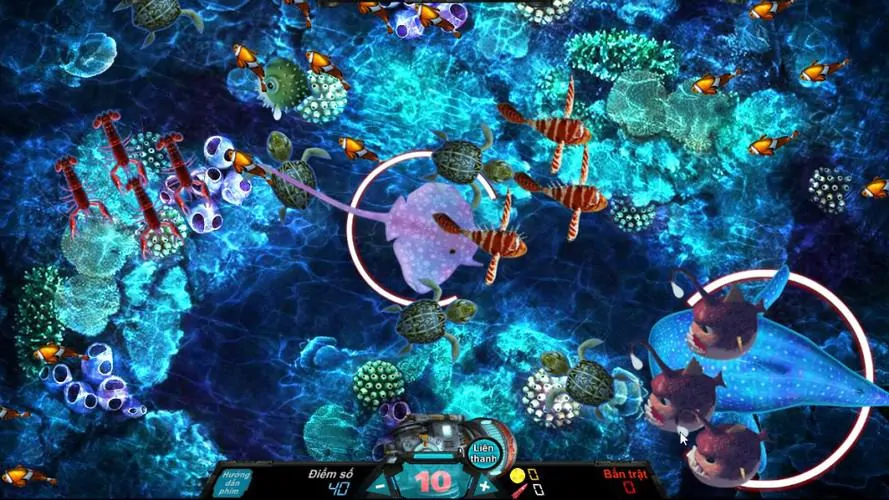Significant knowledge gaps on the impact of alcohol use (and cessation) among cancer patients and survivors remain. A better understanding of alcohol consumption’s effects on therapeutic response, disease progression, and long-term cancer outcomes may support medical decision making and improve survivorship. The plant secondary compound resveratrol, found in grapes used to make red wine and some other plants, has been investigated for many possible health effects, including cancer prevention. However, researchers have found no association between moderate consumption of red wine and the risk of developing prostate cancer (32) or colorectal cancer (33). According to the federal government’s Dietary Guidelines for Americans, 2020–2025, individuals who do not drink alcohol should not start drinking for any reason.
Finally, invasion of HT1080 cells from the tumor into blood vessels (i.e., intravasation), which occurs during metastasis, increased more than eightfold in response to ethanol. A recent study compared innate immune-system functionality with the number of circulating tumor cells in patients with a variety of cancers. In patients with metastatic disease, these circulating tumor cells are promising as biomarkers for tumor progression and overall cancer survival, with relatively high circulating cell numbers correlated with a poor prognosis. Decreased NK cytolytic activity also has been linked with other types of cancer, including colorectal cancer (Kim et al. 2013), metastatic melanoma (Konjevic et al. 2007), and head and neck cancer (Baskic et al. 2013). Alcohol might interfere with oestrogen pathways by increasing hormone levels and enhancing the activity of ERs, important in breast carcinogenesis [38].
Tumors also release factors that can directly or indirectly suppress antitumor immune responses, thus facilitating angiogenesis, invasion of surrounding tissues, and metastasis to distant sites in the body (for a general review, see Jung 2011). (For more information on the processes involved in tumor metastasis, see the sidebar.) The following sections will review the role of alcohol in cancer growth and progression, both in humans and in animal models. For oral and oropharyngeal cancer, an MR study using genetic data on 6000 oral or oropharyngeal cancer cases and 6600 controls found a positive causal effect of alcohol consumption independent of smoking [16].
Alcohol and Immune Interactions in Animal Models of Cancer
The effect of ethanol on MCF-7 cells also was correlated with increases in estrogen receptor alpha content. When the MCF-7 cells were cultured together with human skin fibroblasts in 0.4 percent ethanol for 72 hours, ethanol suppressed estrogen receptor alpha expression compared with untreated cells (Sanchez-Alvarez et al. 2013). Thus, the tumor micro-environment is important in determining estrogen-receptor status and the effects of alcohol on breast cancer.
The Dietary Guidelines also recommends that people who drink alcohol do so in moderation by limiting consumption to 2 drinks or less in a day for men and 1 drink or less in a day for women. Heavy alcohol drinking is defined as having 4 or more drinks on any day or 8 or more drinks per week for women and 5 or more drinks on any day or 15 or more drinks per week for men. The study had several limitations, including that it only looked at current alcohol consumption, not past drinking habits, said Dr. Abnet. Surveys worldwide often have not collected information about past alcohol use, “but for a lot of people, there’s a pattern where they drink more heavily when they’re young and moderately as they get older,” he explained.
We help leaders and future leaders in the healthcare industry work smarter and faster by providing provocative insights, actionable strategies, and practical tools to support execution. Check out our infographic to hear oncology leader’s take on where cancer care is headed in the next decade.
How alcohol may affect cancer risk
Invasive ability generally was related to the expression of ErbB2/neu, an epidermal growth factor (EGF) receptor that is amplified in 20 to 30 percent of breast cancer patients, with higher ErbB2/neu levels indicating higher risk of lymph node metastasis and poor prognosis. More detailed studies of the relationship between alcohol, ErbB2/neu, and invasion in the human breast cancer cell line T47D found that activation of the EGF receptor by addition of EGF did not significantly affect ethanol’s ability to enhance invasiveness (Luo and Miller 2000). Conversely, prevention of ErbB2/neu production inhibited the ability of ethanol to increase migration (Luo and Miller 2000). Evidence that directly implicates immune cells from both the innate and adaptive immune systems in control of cancer growth and progression continues to accumulate. This has stimulated research directed toward developing effective immunotherapeutic approaches to treat cancer (for a review of the tumor immune response as well as approaches being taken to develop immunotherapeutics for cancer, see Harris and Drake 2013). In summary, several reports indicate that alcohol consumption decreases survival of patients with cancer, whereas other studies did not observe this association.
- However, based on more recent, comprehensive studies, public health experts now generally agree that alcohol—including wine—does not have a so-called “cardioprotective” effect.
- WHO had previously released alcohol policy recommendations as part of its “best buys” campaign to help countries focus on the most effective initiatives to prevent noninfectious diseases.
- There are several mechanistic pathways by which the consumption of alcohol, as ethanol, is known to cause cancer, though some are still not fully understood.
- When the tumors reached a size of 1.5 to 2.0 cm (about 28 days after tumor inoculation), the groups were divided in half, and half of each group had the primary tumor-bearing leg amputated.
- Similarly, Aye and colleagues (2004) examined the effects of exposure for 48 hours to different ethanol concentrations on estrogen receptor–negative SKBR3 and estrogen receptor–positive BT474 breast cancer cells.
How Can the Public Be Made Aware of the Cancer Risk From Alcohol?
A higher dose of 0.4 percent w/v ethanol, however, inhibited invasion of SKBR3 cells and created mixed results for BT474, with one study (Aye et al. 2004) detecting no effect on invasion and another study (Xu et al. 2010) detecting increased invasion. Gu and colleagues (2005) assessed the effects of alcohol on human HT1080 colon cancer cells in a chick embryo model, focusing on variables related to the blood supply of the tumor. One of the variables analyzed was the expression of vascular endothelial growth factor (VEGF)—a growth factor that promotes blood vessel formation (i.e., is proangiogenic) and enhances tumor vascularization. Exposure of isolated tumor cells to 10 mM and 20 mM ethanol for 19 hours also increased VEGF mRNA and protein expression. The increased intratumoral vascular volume strongly correlated with the increase in tumor volume as well as with intratumoral connective tissue volume density.
Additional research is likely to uncover targets to mitigate the detrimental effects of alcohol on mortality and to identify specific biochemical and molecular mechanisms involved in the beneficial effects of alcohol related to enhancing survival of cancer patients. This research could translate into the development of more effective and specific targeted approaches to treat cancer patients in general and especially those who abuse alcohol. Few studies have specifically examined the interaction between alcohol and the immune response in cancer patients or in experimental animals implanted with cancer cells. Although human cancer patients often have immune deficits, few data are available that specifically address the effects of 2cb fly alcohol on immune parameters.
Little evidence of an association between alcohol consumption and gallbladder cancer was found in the WCRF Continuous Update Project, but Bagnardi and colleagues found an excess risk of gallbladder cancer among heavy drinkers (RR 2.64 (95% CI 1.62–4.30)). WCRF found an elevated risk of malignant melanoma per 10 g alcohol per day (RR 1.08 (95% CI 1.03–1.13)), but no effect on basal cell carcinoma (RR 1.04 (95% CI 0.99–1.10)) or squamous cell carcinoma (RR 1.03 (95% CI 0.97–1.09)) risk [7]. An increased risk of prostate cancer was observed for light and moderate drinking in Bagnardi and colleagues’ meta-analysis but not in the dose-response analysis of one drink per day by WCRF [7,8]. One study involving estrogen receptor–negative Met-1 cancer cells used female FVB/N mice that consumed 20 percent w/v ethanol in drinking water for 18 weeks before they were injected subcutaneously with the cancer cells (Hong et al. 2010). Compared with water-drinking control mice, the ethanol-drinking animals developed palpable tumors earlier and also developed larger tumors. Several other parameters (i.e., insulin sensitivity, leptin levels in the blood, and estrogen levels) were elevated in the alcohol-consuming mice.
The doctors and nurses administering the treatment will be able to give specific advice about whether it is safe to consume alcohol while undergoing specific cancer treatments. Alcohol can also increase hormone levels, the researchers wrote, which leads to increased cell division and more opportunities for cancers to develop. In addition, alcohol reduces the body’s ability to absorb nutrients that can protect against cancer, including folate and vitamins A, C, D, and E, Brink reports. To address these unknowns, researchers from Oxford Population Health, Peking University and the Chinese Academy of Medical Sciences, Beijing, used a genetic approach by investigating gene variants linked to lower alcohol consumption in Asian populations. Binge drinking—consuming five or more drinks within a few hours for men or four for women—is also likely more dangerous than any other type of drinking, Dr. Abnet explained. But studies have only begun to look at the associations between binge drinking and cancer, he added.
Researchers have explored trends over earlier time periods in previous studies and found similar associations. While alcohol consumption is declining in some areas of the world, such as parts of Europe, it’s on the rise in other how to flush alcohol out of your system areas, including China, India, and many sub-Saharan African nations. Only a few studies have tried to capture the drinking behaviors of cancer survivors, including those still undergoing treatment, said Dr. Agurs-Collins, who was not involved in this new study. And little has been done to understand how to help those who are heavier drinkers change their behavior. A related study using the same alcohol-feeding regimen confirmed alcohol’s effects on growth and angiogenesis of E0771 inoculated into other female C57BL/6 mice (Lu et al. 2014).
Many of these pathways are interlinked and show the complexity and breadth of alcohol’s harmful potential. For example, inflammation can result in oxidative stress, but inflammation is a reaction by the immune system substance abuse group activities which is itself compromised by alcohol use. Furthermore, DNA damage can occur through exposure to acetaldehyde and ROS which are both produced through CYP2E1 activity, with acetaldehyde also a product of ADH activity. Other potential pathways have been proposed including the dysregulation of carnitine metabolism [49]. We have only covered carcinogenesis in this review, but alcohol likely alters, through these pathways and others, other functions in the body which render it more susceptible to other diseases and injuries, as discussed in other articles in this Special Issue.









